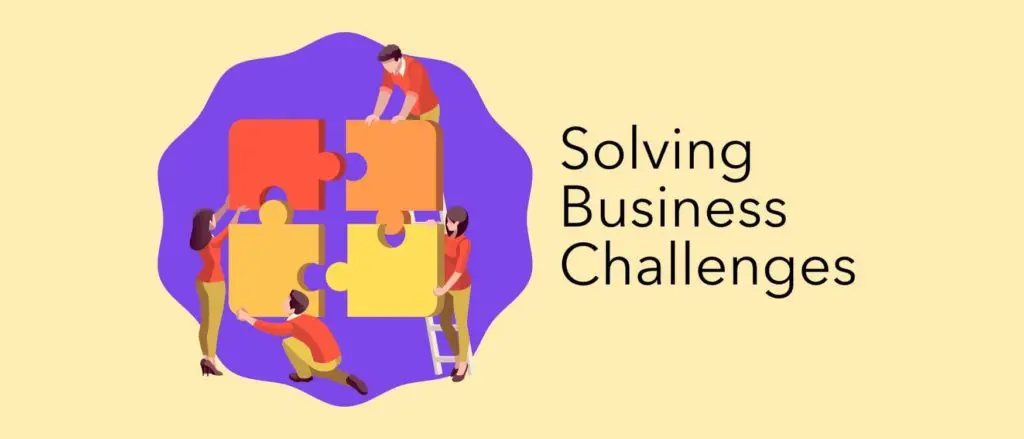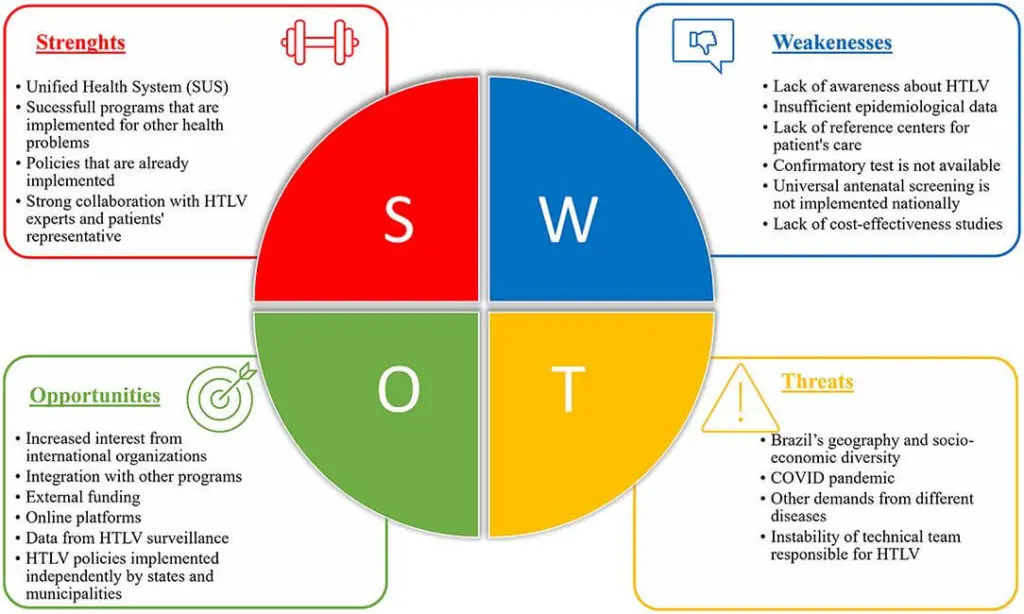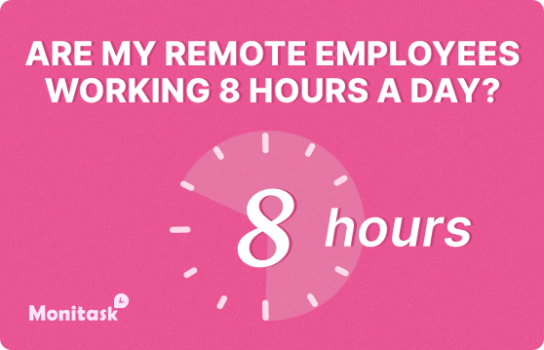Solving Business Challenges: How to Identify and Address Your Company’s Problems

It was all fun and excitement when you first created your business, but at some point, things got a bit sidetracked, and now problems are piling up! Whether it’s a drop in sales, an issue with product quality, or something else entirely, business challenges are inevitable.
All businesses have their own unique set of challenges that they must face. It’s how you identify and address those problems that determine your company’s success. In this blog post, we will discuss the steps you need to take to identify the challenges your business is facing and how to solve them.
Let’s get started to get your company back on track!

To those obstacles that your face while managing a booming business, we like to call them challenges rather than problems. A problem is a situation or concern that needs to be rectified whereas a challenge is an opportunity for business growth.
If you’re not careful, business challenges can quickly turn into business problems. That’s why it’s important to nip them in the bud as soon as possible! These business challenges come in all shapes and sizes and how you will deal with them depends on the size of your company, your industry, and a variety of other factors.
Let’s dive into the topic!
Why Solving Business Challenges?
We all would want our businesses to run smoothly, too bad this is real life and business challenges come up all the time, and it is our job as business owners and managers to face them head-on.
There are many reasons why you should take the time to solve business challenges:
- To improve efficiency and productivity
- To increase sales and revenue
- To reduce costs
- To improve customer satisfaction
Ensuring the longevity of your business should be one of your top priorities. As a business owner, you have to continuously adapt yourself to the ever-changing business landscape to stay ahead of the competition. If you’re not careful, your business will become stagnant and eventually fail.
Solving business challenges is essential for business growth. It allows you to identify areas that need improvement and take steps to improve them. Additionally, solving business challenges gives you a chance to show your employees that you’re committed to making the company better. This can boost morale and encourage them to work harder.
Now that we’ve discussed the importance of solving business challenges, let’s take a look at how you can identify them.
Business Challenge Assessment (BCA): The Pathway to Success
First of all, how can you solve a challenge you haven’t identified? For this, we bring you the “Business Challenge Assessment” a.k.a the BCA!
The BCA is a business management process you can use to identify business challenges and opportunities for further improvement. It is based on the premise that all businesses have challenges, and that by identifying and addressing those challenges, businesses can improve their performance.
The BCA process begins with a SWOT analysis, which is a tool used to identify the strengths, weaknesses, opportunities, and threats of a business. Once the SWOT analysis is complete, you can move on to identifying the business challenges that need to be addressed.
There are four steps in the BCA process:
- Step One: Conduct a SWOT Analysis – Solve business challenges by first identifying them! Use a SWOT analysis to take a close look at the state of your business.
- Step Two: Identifying Business Challenges – Once you have conducted a SWOT analysis, you will have a good idea of the business challenges that need to be addressed.
- Step Three: Prioritize the Business Challenges – In this step, you will prioritize the business challenges based on their importance and urgency.
- Step Four: Develop a Plan to Address the Business Challenges – The final step is to develop a plan of action to address the business challenges. This may include changes to business processes, organizational structures, or even business strategies.
Now that you know the steps involved in conducting a BCA, let’s take a closer look at each step!
Conducting a SWOT Analysis
The first step in the BCA process is to conduct a SWOT analysis. SWOT stands for strengths, weaknesses, opportunities, and threats. This analysis will give you a good overview of the state of your business and where it needs improvement.

To conduct a SWOT analysis, you will need to gather data from various sources such as financial statements, customer surveys, employees, etc. Once you’ve completed your analysis, you’ll have a good understanding of your business’s strengths, weaknesses, opportunities, and threats. But what do you do with this information? How can you use it to better your business?
There are a few different ways you can use SWOT analysis results to overcome business challenges! Let’s move on to the next step!
Get more out of your business
Get the best employee engagement content every week via mailing list
Identifying Business Challenges
This step can be difficult, as business challenges can often be disguised as other problems. For example, a drop in sales might seem like an issue with your product or marketing strategy. However, it could also be a sign that your target market has changed and you need to adjust your offerings accordingly.
But, as well you can use the information to identify new opportunities for business growth. For example, if you find that your business has a lot of untapped potential in the digital sphere, you could develop a plan for expanding your online presence.
If your business is running well, you can use the information to help you anticipate and avoid potential threats to your business
These challenges may be related to marketing, sales, operations, finance, or any other area of business. According to SEMRush, 66% of small businesses report having financial difficulties, with 43% saying that paying operating costs is the biggest problem. Operating costs include the price of labor, employee benefits, insurance, required tools, etc.

Some other common business challenges include:
- Declining sales
- Changing customer needs
- New competition
- Poor business processes
- Inefficient use of resources
- Poor customer service
- High employee turnover
- Poor financial management
Take into account that you are not in this by yourself! Just check out the 35 biggest challenges growing businesses face here!
Once you have identified the business challenges, it’s time to prioritize them. This is important because not all business challenges are created equal! Some may be more urgent than others, and some may be more important to the overall success of your business.
Prioritize Business Challenges
In this step, you prioritize the business challenges based on their importance and urgency. This will help you determine which business challenges need to be addressed first and which can wait.
To prioritize the business challenges, you will need to consider factors such as the impact of the challenge on business performance, the resources required to address the challenge, and the timeline for addressing the challenge.

Some business challenges will have a greater impact on business performance than others. For example, a decline in sales will hinder business performance a lot more than poor customer service.
Some common solutions to business challenges include:
- Improved training for employees
- Changes to business processes
- Implementation of new technologies
- Improve delegation of tasks and responsibilities
- The hiring of new staff
- Changes to marketing or sales strategies
- Improved financial management
Once you have prioritized the business challenges, it’s time to start developing solutions!
Developing a Plan to Address Business Challenges
The final step in the BCA process is to develop a plan of action to address the business challenges. This may include changes to business processes, organizational structures, or even business strategies.
The goal here is to create a roadmap for addressing the business challenges, and should be achievable within a reasonable timeframe. This roadmap should be tailored to your specific business and situation. It should also be flexible enough to adapt as your business evolves and new challenges arise.

It’s important to involve all relevant stakeholders in the development of the plan so that everyone is on board with the proposed changes
Once you have developed a plan to address the business challenges, it’s time to implement it! This is where the rubber meets the road. Implementation will require hard work, dedication, and commitment from everyone involved.
But, if you stick to it, you’ll be able to overcome any business challenge that comes your way!
Track Progress
However, simply finding a solution is not enough. You also need to track the progress of your solutions to ensure that they are working as intended.
There are many ways to track the progress of your business challenge solutions. First, you can keep a close eye on your bottom line. If you see an improvement in your financial results, then you know that your solutions are having a positive impact!
You can also track customer feedback. If you see an increase in customer satisfaction or sales, then again, this is a good sign that your solutions are working well. Finally, you can ask employees for their input. If they feel that they can work more efficiently or have less stress, then this is another indication that your solutions are on the right track.
Consider purchasing a subscription for monitoring tracking software like Monitask!
And that’s it, ta-da! You have now successfully completed the business challenge analysis process. This framework can be used to address any business challenge, big or small. So, what are you waiting for? Get out there and start solving those business challenges!
We hope this guide has helped solve business challenges. If you have any questions or need assistance, please feel free to contact us. We would be more than happy to help!
Best Practices to Avoid Business Shut Down
We know is a difficult time for business owners across the globe. With the COVID-19 pandemic aftermath, many companies have been forced to shutter their doors. This is an unprecedented event that has caught us all off guard.
Yet, we cannot blame everything on COVID-19. According to CB Insights, a lack of successful product/market fit results in 42% of new businesses failing, resulting in nobody wanting to purchase what the business is offering.

All business owners need to take a step back and analyze their businesses. They need to understand what is working, and more importantly, what is not working. Therefore, you are the only one that can make the necessary changes to avoid a business shutdown.
See below some key stances for your business boom!
- First and foremost, it’s important to have a solid business continuity plan in place. This plan should outline how you will keep your business running in the event of an emergency. It should cover everything from how you will communicate with employees to how you will maintain operations.
- Second, you need to make sure that your finances are in order. This means having enough cash on hand to cover expenses, especially important if your business is impacted by the current pandemic. Many businesses are struggling to make ends meet, so it’s crucial to be as financially prepared as possible.
- Finally, you need to have a clear understanding of your business model and how it will generate revenue. This includes identifying your target market and understanding your pricing strategy.
We know is a lot to take in, we know. But, if you can focus on these three key areas, you will be well on your way to business success!
Takeaway
There you have it! A simple guide on how to identify and address business challenges. Just remember to conduct a SWOT analysis, identify the business challenges, and prioritize them based on their importance and urgency. And you’ll be well on your way to overcome any business challenge that comes your way!
By following these steps, you can identify and address the business challenges that are holding your company back from success! Remember that the key to business success is never to give up! If you keep pushing through the challenges, eventually you will come out on top.
We wish you all the best of luck in your business endeavors! Still, feeling stuck? Don’t worry, we’ve got you covered. Check out our blog post on project management, productivity, and employee engagement.
-The Monitask Team


